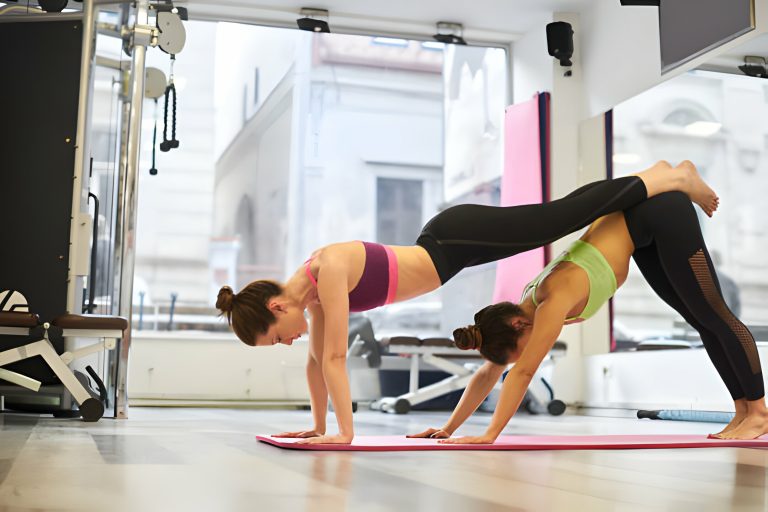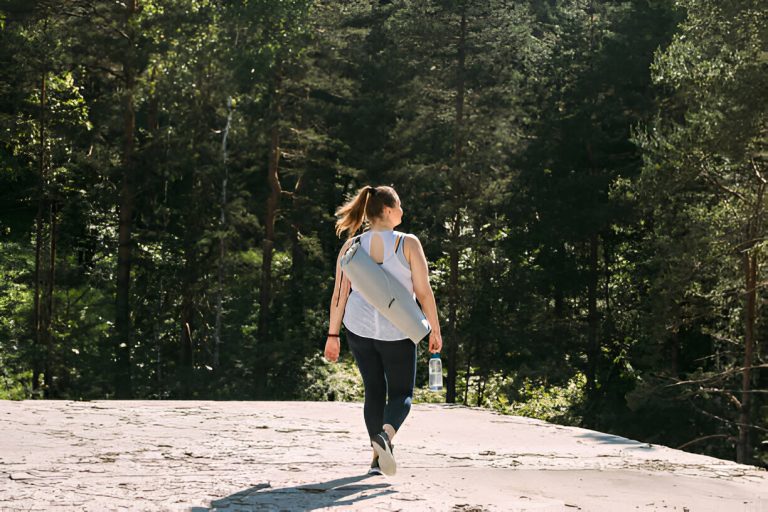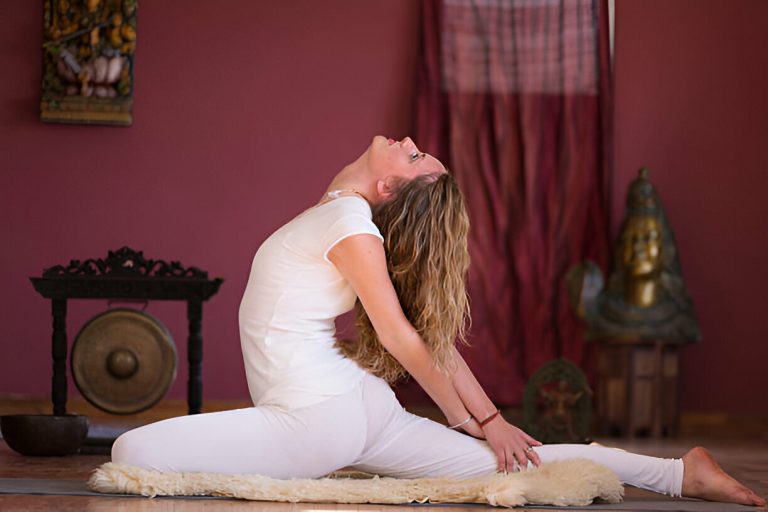Expand Your Heart: Invigorating Yoga Poses for Opening the Chest

Heart opening yoga poses, often referred to as chest openers, specifically aim to stretch and strengthen the muscles around the chest, shoulders, and upper back. Embedded in the ancient practices of yoga, these poses are designed not only to enhance physical flexibility but also to facilitate emotional release. By consciously expanding the chest area, individuals are encouraged to cultivate an open heart, sometimes associated with an openness to new experiences and emotional vulnerability, which can lead to greater compassion and empathy.
The phrase “Expand Your Heart: Invigorating Yoga Poses for Opening the Chest” conveys a set of dynamic asanas that focus on enhancing the flexibility of the thoracic spine, encouraging better posture and improved breathing. The physical benefits of these practices are manifold, including the relief of tension from the muscles that typically become strained from prolonged sitting or poor postural habits. Deep chest opening poses also have the potential to alleviate the slouch of a sedentary lifestyle, counteracting the closing in of the chest that comes from excessive screen time. In addition, such poses may play a subtle role in promoting respiratory health by allowing the lungs to expand more fully during inhalation.
Moving forward, the discussion will turn to a detailed examination of specific asanas such as Bhujangasana (Cobra Pose), Ustrasana (Camel Pose), and Setu Bandhasana (Bridge Pose). These asanas are not only beneficial in forging a proud chest but are also thought to energize the heart chakra – the spiritual energy center associated with love and compassion. The effects of these asanas extend beyond mere physical changes, potentially fostering a deeper sense of connection with oneself and an enriched capacity for interpersonal relationships.
In addition to the exploration of individual poses, the conversation will pivot to the integration of heart opening sequences into daily practice. This includes recommendations on warm-ups, the importance of breathwork in conjunction with the movements, and the ideal duration of holding these poses for optimal benefits. Special attention will be given to highlighting modifications and the use of props to ensure that practitioners of all levels can safely incorporate these chest openers into their routines.
Finally, attention will be paid to the common challenges and misconceptions surrounding heart opening yoga poses. Acknowledging and addressing these concerns may empower individuals to approach these asanas with mindfulness and respect for their body’s limitations, thereby maximizing the advantages and minimizing the risk of injury. This will contribute to a well-rounded understanding of the transformative power of heart opening poses in the broad spectrum of yoga practice.
- Heart opening yoga poses focus on stretching and expanding the chest area, which can enhance breathing, improve posture, and promote emotional release.
- Incorporating backbends into one’s yoga practice such as Camel Pose (Ustrasana) or Bridge Pose (Setu Bandhasana) can strengthen the back muscles and increase spinal flexibility, contributing to a more open heart space.
- Practicing the Cobra Pose (Bhujangasana) encourages the lifting of the chest and works to counteract the hunching that often occurs from daily activities like sitting at a desk or using a smartphone.
- Heart openers can be therapeutic, potentially alleviating feelings of tightness or constriction in the chest, which is sometimes associated with stress, anxiety, or depression.
- The Fish Pose (Matsyasana) is noted for its ability to stretch the front of the neck and the chest, as well as for stimulating the thyroid gland, which is linked to metabolism regulation.
- Poses such as the Wheel Pose (Urdhva Dhanurasana) require significant strength and flexibility, underlining the importance of warming up properly and progressing gradually to avoid injury.
- Yoga practitioners are encouraged to use props, such as bolsters or blocks, for support in heart opening poses, making them more accessible and comfortable, especially for beginners or those with limited flexibility.
- Engaging in heart opening yoga poses can foster a sense of openness and vulnerability, inviting practitioners to release emotional barriers and embrace a state of compassion and self-love.
- It’s recommended to balance heart opening practices with poses that stabilize and root the body, such as Mountain Pose (Tadasana) or Warrior II (Virabhadrasana II), to maintain a grounded and centered yoga experience.
- Regular practice of heart opening yoga poses can create lasting improvements in one’s physical and emotional well-being, further enhancing the capacity for deep breathing and providing a sense of rejuvenation and energy.
What Are the Best Heart Opening Yoga Poses to Enhance Chest Expansion?
When discussing heart opening yoga poses, it’s essential to understand the associated terminology. Heart opening, in the context of yoga, refers to exercises that stretch and expand the chest area, promoting increased circulation and respiratory capacity. These poses are often categorized as backbends and can range from gentle stretches like the Cobra Pose to more intense poses like the Wheel Pose. Practitioners believe these poses not only enhance physical flexibility but also emotional release, contributing to a more compassionate and open-hearted demeanor.
Heart opening yoga poses focus on expanding the thoracic region of the body, encouraging a literal and metaphorical opening of the heart space. These exercises generally function by stretching the front body, lengthening the spine, and promoting better posture. Physiologically, they facilitate deeper breathing and may stimulate the heart chakra, an energy center associated with love, compassion, and emotional well-being. From a psychological perspective, the heart-opening sequences are thought to counteract the common forward-hunching posture induced by modern lifestyle habits, such as prolonged sitting and computer use, allowing individuals to reposition themselves physically and emotionally towards a more open and receptive state.
The Impact of Cardiovascular Exercise on Heart Health
Regular cardiovascular exercise strengthens the heart muscle, enhancing its efficiency in pumping blood throughout the body. This form of exercise can involve activities such as jogging, swimming, or cycling, each capable of raising the heart rate to a level where the cardiovascular system is stimulated. Specific adaptations from consistent cardiovascular training include a reduction in resting heart rate, owing to the increased stroke volume of the heart. Additionally, arterial flexibility is often improved, reducing the risk of hypertension and associated complications. Moreover, the improved circulation resulting from aerobic workouts supports the delivery of oxygen and nutrients to tissues, while also aiding in the elimination of waste products, thereby supporting overall cellular health and function.
Nutrition for a Healthy Cardiovascular System
A diet rich in omega-3 fatty acids, antioxidants, and fiber plays a critical role in maintaining heart health. Foods such as fatty fish like salmon, flaxseeds, and walnuts provide omega-3 fatty acids which are known to reduce inflammation and lower the risk of heart disease. Antioxidants, found in an array of fruits and vegetables, combat oxidative stress within the cardiovascular system, protecting against arterial damage. Berries, dark chocolate, and green leafy vegetables are exemplary sources. Fiber, particularly the soluble kind found in oats, legumes, and apples, assists in regulating cholesterol levels by binding to cholesterol in the digestive system and preventing its absorption. Together, these nutrients contribute to a balanced diet that can help keep the heart’s arteries clear and its rhythm regular.
Technological Advances in Heart Monitoring
The development of wearable technology has revolutionized the way individuals can monitor their heart health. Devices such as smartwatches and fitness trackers are equipped with sensors that track heart rate variability, detect irregular heartbeats, and even measure blood oxygen saturation levels. The ability to continuously monitor these metrics has made it easier for individuals to notice potential health issues early and seek medical advice promptly. Moreover, some of these devices sync with smartphone apps where users can track trends over time and share them with healthcare providers, facilitating a more comprehensive understanding of their cardiovascular wellbeing.
Mental and Emotional Benefits of Stress Reduction Techniques
Stress has a direct and often detrimental effect on heart health, which is why techniques to reduce anxiety and stress have gained popularity. Practices such as mindfulness meditation, deep-breathing exercises, and progressive muscle relaxation have all demonstrated efficacy in reducing the physiological effects of stress. Regular meditation can reduce cortisol levels and diminish the stress response, contributing to decreased blood pressure and a lowered heart rate. By cultivating a state of relaxation and enhancing emotional regulation, such techniques can mitigate the impact of chronic stress on the cardiovascular system, thereby contributing to a more resilient and healthy heart.
What are the benefits of yoga poses that open the chest?
Yoga poses that focus on opening the chest can have numerous benefits for both physical and emotional health. Physically, these poses help to improve posture by counteracting the tendency to slouch, which is especially beneficial for individuals who spend long hours sitting at a desk. The expansion of the chest increases lung capacity, which enhances breathing and can lead to better oxygenation of the blood.
Emotionally, heart-opening yoga poses are associated with the release of emotional blockages and can promote feelings of relief and vulnerability. They are often recommended to help alleviate stress and anxiety, as they encourage an open, receptive state of mind. Opening the chest is symbolically linked to opening the heart, which can aid in fostering a sense of love, compassion, and connection.
Which yoga poses are most effective for opening the chest?
Some of the most effective yoga poses for opening the chest include the Camel Pose (Ustrasana), Cobra Pose (Bhujangasana), and the Bridge Pose (Setu Bandhasana). Camel Pose stretches the entire front of the body and is particularly potent for opening the chest and heart. Cobra Pose is a gentle backbend that promotes flexibility in the spine and opens the shoulders and chest. Bridge Pose, on the other hand, not only opens the chest but also strengthens the back muscles.
Other notable poses for chest expansion are the Bow Pose (Dhanurasana), which enhances spinal flexibility while opening the chest, and the Wheel Pose (Chakrasana), which is a more advanced pose that provides a deep stretch to the chest muscles. Incorporating these poses into a regular yoga practice can provide a comprehensive approach to improving chest openness.
How often should I practice these yoga poses for the best results?
For the best results, incorporating chest-opening yoga poses into your practice several times a week is ideal. However, consistency is more important than frequency. Practicing these poses in a balanced and regular yoga routine, even if it’s just a few times a week, can lead to significant improvements over time. Listen to your body and avoid overexertion—quality is more important than quantity.
It’s also beneficial to hold the poses for an extended period to allow the muscles to relax and stretch fully. Starting with holding each pose for 20 to 30 seconds and gradually increasing the duration as you gain more flexibility and strength can be an effective approach. Always ensure to maintain proper form and breathing throughout each pose to maximize their benefits.
Are these yoga poses suitable for beginners?
Many chest-opening yoga poses are suitable for beginners, although some may require slight modifications. Poses like Cobra Pose and Bridge Pose are accessible for most beginners and can be adjusted to match the individual’s flexibility level. For example, beginners can perform a gentle version of Cobra without lifting the chest too high off the mat, focusing on elongating the spine rather than achieving a deep backbend.
It is crucial for beginners to be mindful of their body’s limits and to use props such as yoga blocks or straps to assist in maintaining proper alignment and prevent strain. Attending a beginner’s class or practicing with an experienced instructor can also provide the guidance necessary to execute these poses safely. As with any yoga practice, it’s important to progress slowly and incrementally to build strength and flexibility over time.
Can chest-opening yoga poses help with respiratory issues?
Chest-opening yoga poses can indeed be beneficial for individuals with respiratory issues as they encourage deeper breathing and can help increase lung capacity. By expanding the rib cage and opening the thoracic region, these poses allow for a fuller range of motion in the chest area, facilitating deeper inhalations and exhalations. This can be especially helpful for conditions like asthma, where the expansion of the airways can relieve some symptoms.
However, it should be noted that while yoga can complement medical treatment, it should not replace it. Individuals with respiratory issues should consult with a healthcare provider before starting any new exercise regimen. Additionally, they should be aware of their limits and avoid any poses that cause discomfort or exacerbate their condition. Breathing exercises (pranayama) can also be integrated into the practice to further enhance respiratory function.
What precautions should I take when practicing chest-opening yoga poses?
When practicing chest-opening yoga poses, it’s important to take certain precautions to prevent injury. First and foremost, ensure that you properly warm up your body before attempting deeper poses. A good warm-up includes gentle stretching and movements that gradually increase your heart rate. This will help prepare your muscles and joints for more extensive stretching and reduce the risk of strain.
Additionally, always listen to your body and stay within your comfort limits. Never force your body into a pose that causes pain or intense discomfort. Use props like blocks, straps, or blankets to support your body and maintain alignment. If you have any pre-existing conditions, such as injuries or illnesses, consult with a healthcare provider or a qualified yoga instructor for individual advice and modifications to avoid exacerbations.
Do chest openers help improve posture?
Chest openers are excellent for improving posture. They work by counteracting the typical forward-hunching posture that many people develop from prolonged sitting and screen time. These poses strengthen the back muscles and stretch the chest, shoulders, and abdominal muscles, which can help to realign the body into a more upright position.
By incorporating chest openers into your regular yoga practice, you can experience a gradual improvement in your overall posture. This not only benefits your appearance but also promotes better body mechanics, reducing the risk of pain and injury. Improved posture also enables more effective breathing, which is beneficial for both physical and mental well-being.
Could heart-opening yoga poses have emotional or mental benefits?
Heart-opening yoga poses are often associated with emotional and mental benefits. The physical action of opening the chest can evoke a sense of releasing emotional blockages and encourage the expression of openness and vulnerability. It is not uncommon for individuals to experience a release of emotions during or after practicing heart-opening poses.
Mentally, these poses can help to combat feelings of stress and anxiety, creating a calming effect on the mind. The connection between the physical posture and the emotional state can lead to increased feelings of joy, compassion, and self-love, which may contribute to a more positive and balanced outlook on life. Thus, heart-opening poses can be powerful tools in the journey towards emotional and mental wellness.
What should I focus on during a chest-opener yoga pose to get the most out of it?
During a chest-opener pose, your focus should be on maintaining proper alignment to avoid strain and maximize the opening effect. Pay close attention to your breath; ensure you’re taking deep, controlled breaths that aid in expanding your chest and ribcage. Use the inhalations to create space in the body and exhale to release any tension.
Additionally, it’s important to be mindful and present with the sensations in your body. Notice where you feel the stretch and focus on relaxing the muscles in these areas. Don’t rush the process; allow your body to open up naturally and gently with each breath. Staying mindful of both your physical and emotional state can help deepen your practice and enhance the overall benefits of the poses.
Are there any specific sequences of yoga poses recommended for chest opening?
Yes, there are specific sequences of yoga poses that are effective for chest opening. Starting with gentle stretches like Cat-Cow (Marjaryasana-Bitilasana) can prepare the spine for deeper backbends. Moving on to standing poses such as Mountain Pose (Tadasana) with a backbend or Upward Salute (Urdhva Hastasana) can help lengthen the spine and create space in the chest area.
Progressing to more intense poses like the ones mentioned before (Camel Pose, Cobra Pose, Bridge Pose, etc.) should be done gradually, with each pose building on the openness created by the previous one. It’s beneficial to finish the sequence with a calming pose like Fish Pose (Matsyasana) or a supported reclined pose to allow the body to assimilate the stretching and to relax any activated muscles. Remember, it’s always important to listen to your body and move through sequences at a pace that suits your individual needs.
Final Thoughts
The practice of heart opening yoga poses serves as a powerful tool for enhancing physical and emotional wellbeing. By incorporating these invigorating chest-opening stretches into our regular yoga routine, we not only boost our respiratory capacity but also facilitate the release of deeply held tensions and emotional blockages. Poses such as the Camel Pose, Bridge Pose, and Cobra Pose are exemplary in expanding the thoracic region, promoting better posture, and fostering a sense of openness and vulnerability.
Heart opening yoga poses hold the potential to transform our practice by inviting more love, compassion, and self-acceptance into our lives. Key insights reveal that consistent engagement with these poses can lead to an improved ability to navigate life’s challenges with resilience and grace. Moreover, the physical benefits of a more flexible and stronger upper body are complemented by the mental clarity and stress relief often experienced through heart openers.
As we delve deeper into the realm of heart opening yoga poses, we uncover a journey of self-discovery that transcends the physical form, allowing us to connect deeply with our innermost feelings and intuition. To cultivate an open heart is to embrace life’s experiences with warmth and generosity, setting the foundation for a more fulfilling and harmonious existence. Remembering to approach each pose with mindfulness and patience, we can fully experience the transformative power inherent within heart opening yoga poses.






